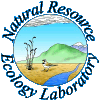
Biocomplexity, Spatial Scale, and Fragmentation: Implications for Arid and Semi-arid Ecosystems (SCALE)

Global Objectives
1. Develop a framework
for analyzing and describing ecosystem spatial complexity and its role
in grazed ecosystem function and sustainability, including the movement-mediated
responses of herbivores to complexity and fragmentation.
2. Determine the effects of real fragmentation experiments on herbivores,
ecosystems, enterprises and people (Fig.1), and use model-simulated fragmentation/consolidation
experiments to identify options for ecological and economic sustainability.
3. Characterize patterns of ecosystem fragmentation as they exist under
different environmental, political and economic systems; investigate how
and if ecological and political-economic factors interact to control the
evolution of land use systems.
4. Create a method and modeling approach for assessing the value of natural
capitol in complex grazed ecosystems, the costs of complexity loss due
to fragmentation, and the trade-offs between economic inputs and ecological
complexity.
5. Coordinate these analyses in an integrated assessment of complexity
and fragmentation.
1. Develop a state-of-knowledge
publication on complexity, scale, and fragmentation.
2. Develop a framework for complexity analysis, apply to all sites, determine
herbivore access to complexity for fragmented and un-fragmented grazing
orbits.
3. Determine the effects of pasture size on animal diet quality and performance.
4. Determine effects of fragmentation on herbivore access to ecosystem
complexity.
5. Develop a standard format to differentiate and compare land use patterns
and management scales within and across study sites.
6. Analyze the history of land use systems; their causes and effects.
(This research objective will be downplayed under current funding.)
7. Investigate how ecological, political, and socio-economic factors interact
to influence individual land use decisions.
8. Gather information on household economic performance and the economic
dimensions of livestock production systems in relation to scale and resource
access.
9. Determine economic-ecological interactions resulting from alternative
land use practices.
10. Determine the integrated trade-offs between ecosystem fragmentation
and external economic subsidies, on enterprise and regional scale productivity.
(This research objective will not be covered with current funding.)
11. Develop competing models linking animal populations to spatial complexity.
12. Model effects of fragmentation on ecosystems and people.
13. Study general responses of arid and semi-arid land ecosystems to fragmentation.
Page Last Modified: October
13, 2006
Disclaimer
| Equal
Opportunity Statement
Webmaster: jlackett@nrel.colostate.edu
